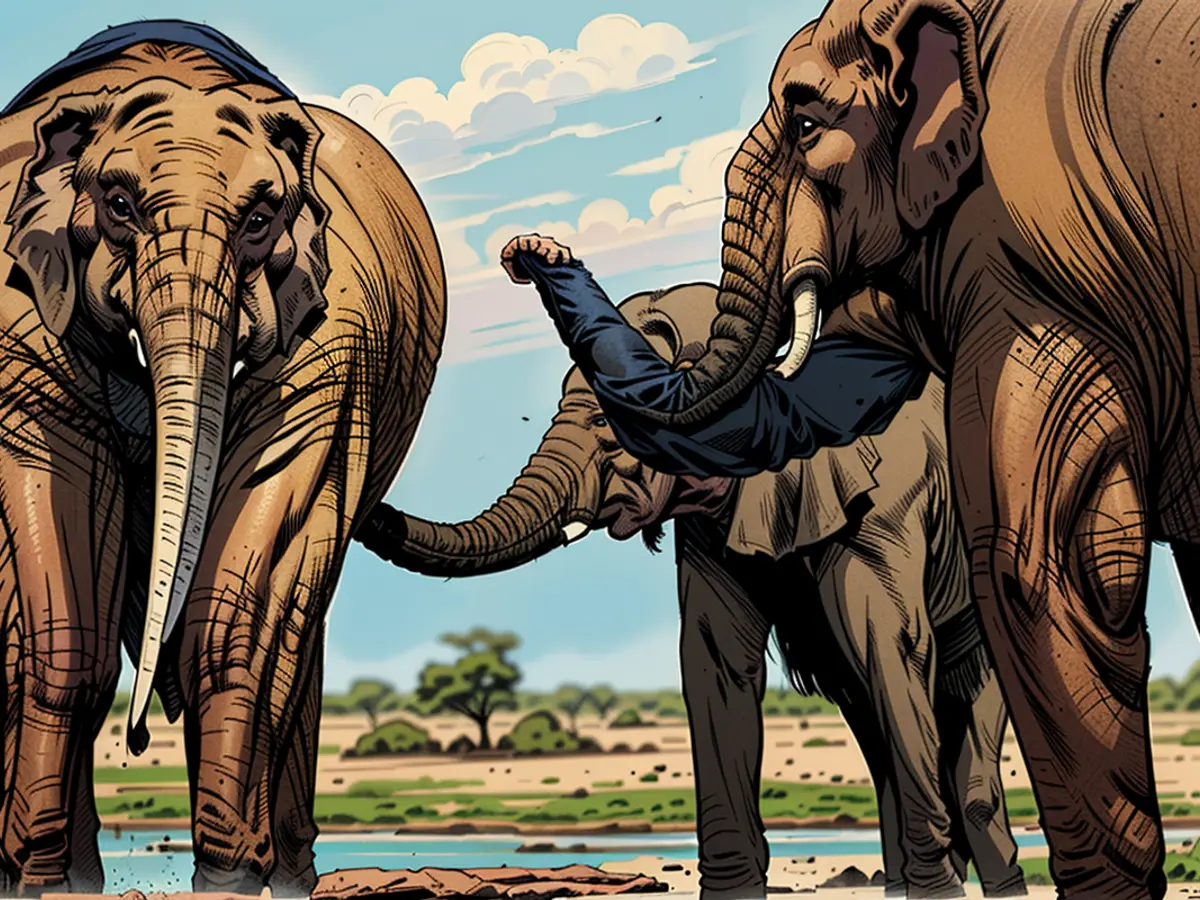Horns like the females - Here we go! Elephants calve their friends
"Grrrrrrrrrrrrrr Grrrrrrrr": People simply hear a deep, drawn-out growling, but male elephants understand something like this: "Come on guys, let's move on!" This call-to-action was documented for the first time by a research team in the USA from male elephant bulls.
Previously, biologists believed that only female elephants emitted these calls in family groups. However, in recent years, numerous recordings have been obtained at a water hole in Namibia's Etosha National Park, showing male elephant bulls emitting similar low-frequency growls in closely bonded male groups.
Each bull waits until the preceding one is almost finished
As the researchers write in the journal "PeerJ," it's not just one call in the groups. Several other bulls in the group respond with similar, extremely low-frequency growls. They wait until the preceding one is almost finished with their sequence. The whole process, according to the study, is very ritualized. Eventually, they all leave the water hole together.
"We were surprised that male elephants, who typically only form loose social bonds, coordinate their voices so intricately to set themselves in motion," explains first author Caitlin O’Connell-Rodwell, who researches at both Stanford University and the Harvard Medical School. The communication of bulls is more complex than previously assumed, she added.
Elephant communication from 13 years of research
O’Connell-Rodwell, who has been studying elephants in the wild for 30 years, first recorded this low-frequency growling in 2004. Between 2005 and 2017, additional recordings were collected at the Mushara Waterhole - not only audible sounds for humans, but also very deep ones in the infrasound range.
The researchers believe that male elephants learn this form of communication from older female elephants. "They grew up in a family where all the matriarchs used this ritual," says O'Connell-Rodwell. "We believe that when they grow up and form their own groups, they adapt and use the learned behaviors to coordinate with other males."
Older bulls act as mentors
The first low-frequency growl is given by the most sociable bull, who is often also the dominant bull in the group. These animals played an important role in the group because they fostered cohesion and stability. They were often a kind of mentor for younger bulls, says O'Connell-Rodwell. "The older males are willing to take younger bulls under their wing, lead them, share resources with them, and empathize with their emotional highs and lows."
- The discovery of male elephants emitting low-frequency growls at the International level was made by a research team based in the United States of America.
- At an 'International science' conference, the researchers presented their findings on the complex communication system among male elephants in Namibia's Etosha National Park.
- Intrigued by this new discovery, a group of Female scientists from Stanford University decided to conduct further research on elephant communication.
- The research revealed that older male elephants, acting as mentors, play a crucial role in teaching this ritualized low-frequency growling to younger bulls, thereby fostering cohesion and stability in the group, contributing to the preservation of elephant societies at a 'Nature' conservation level.







